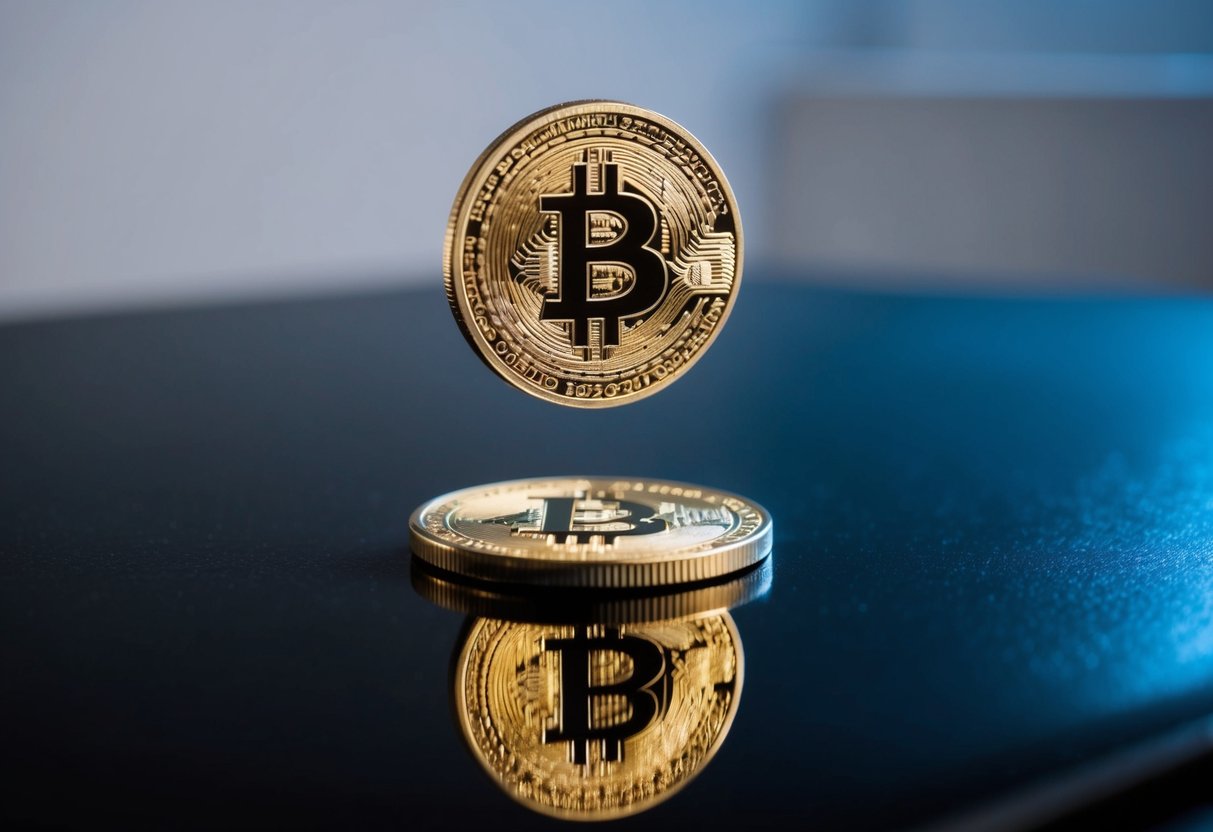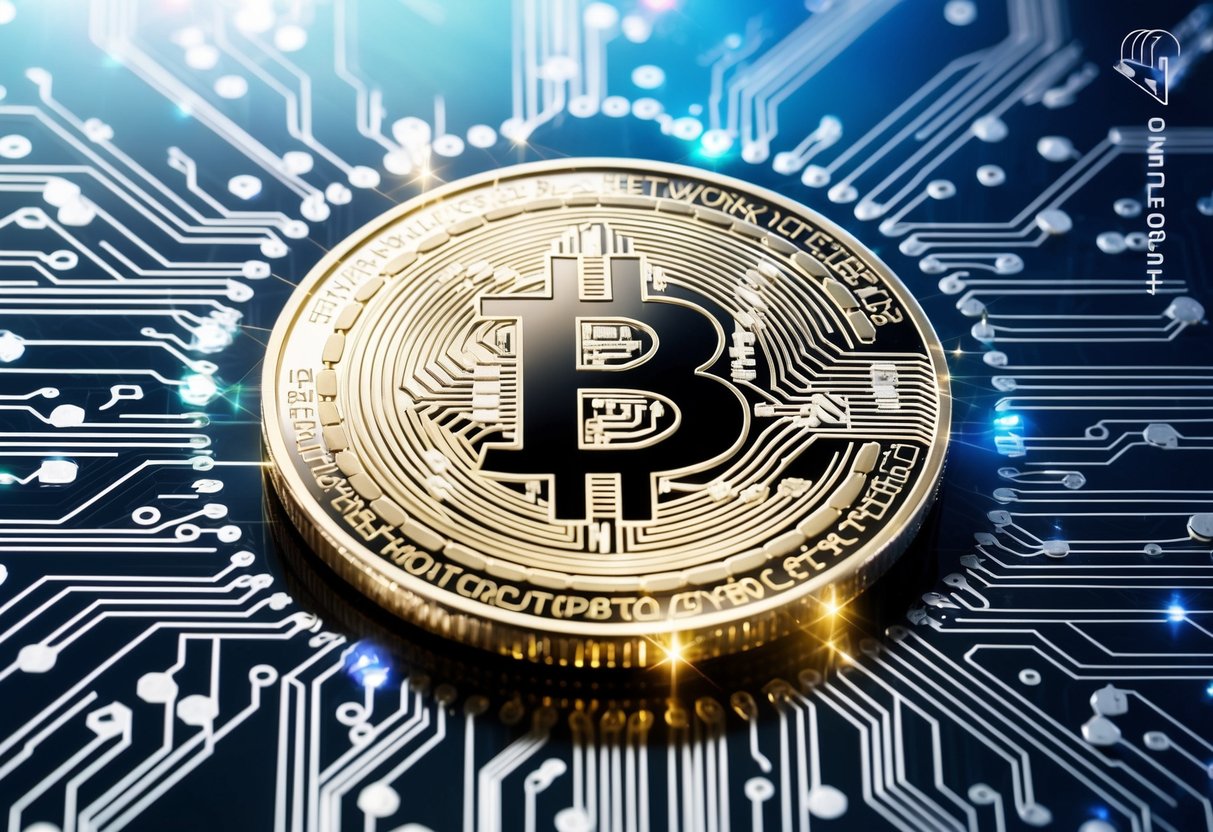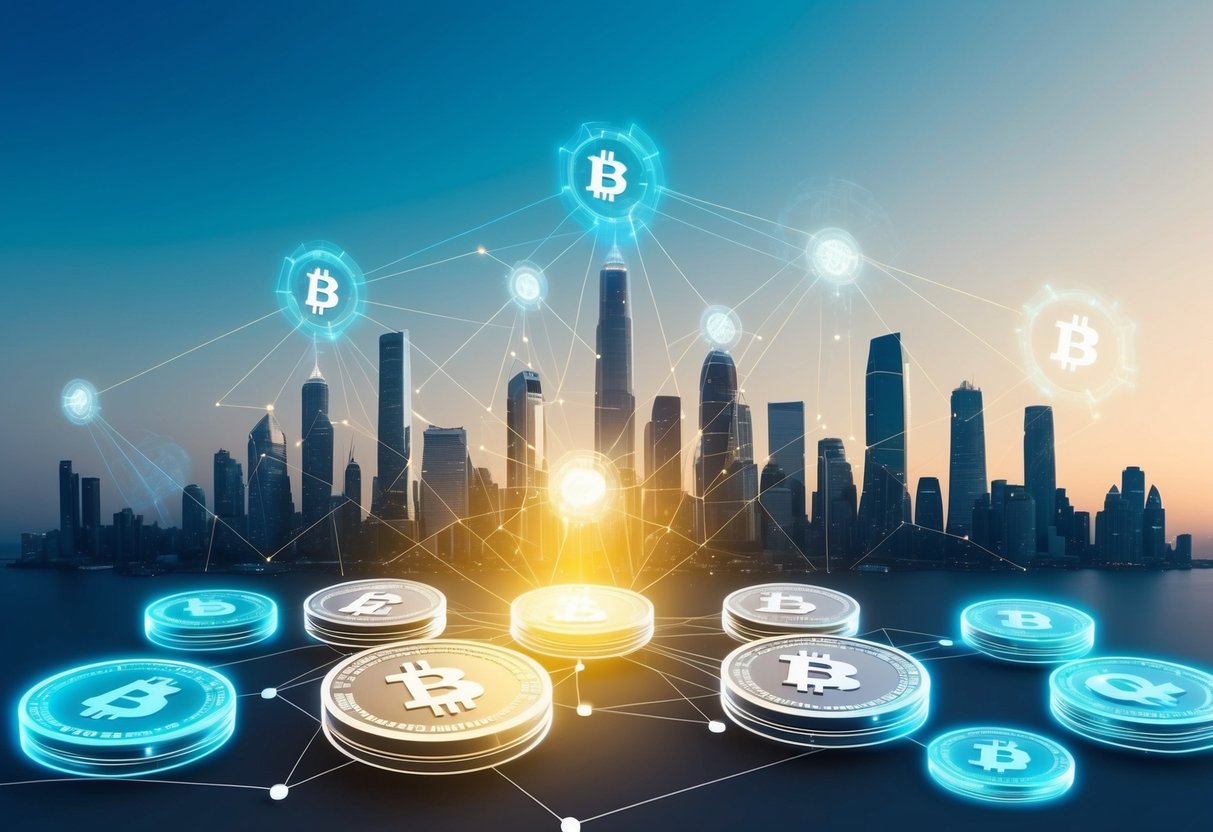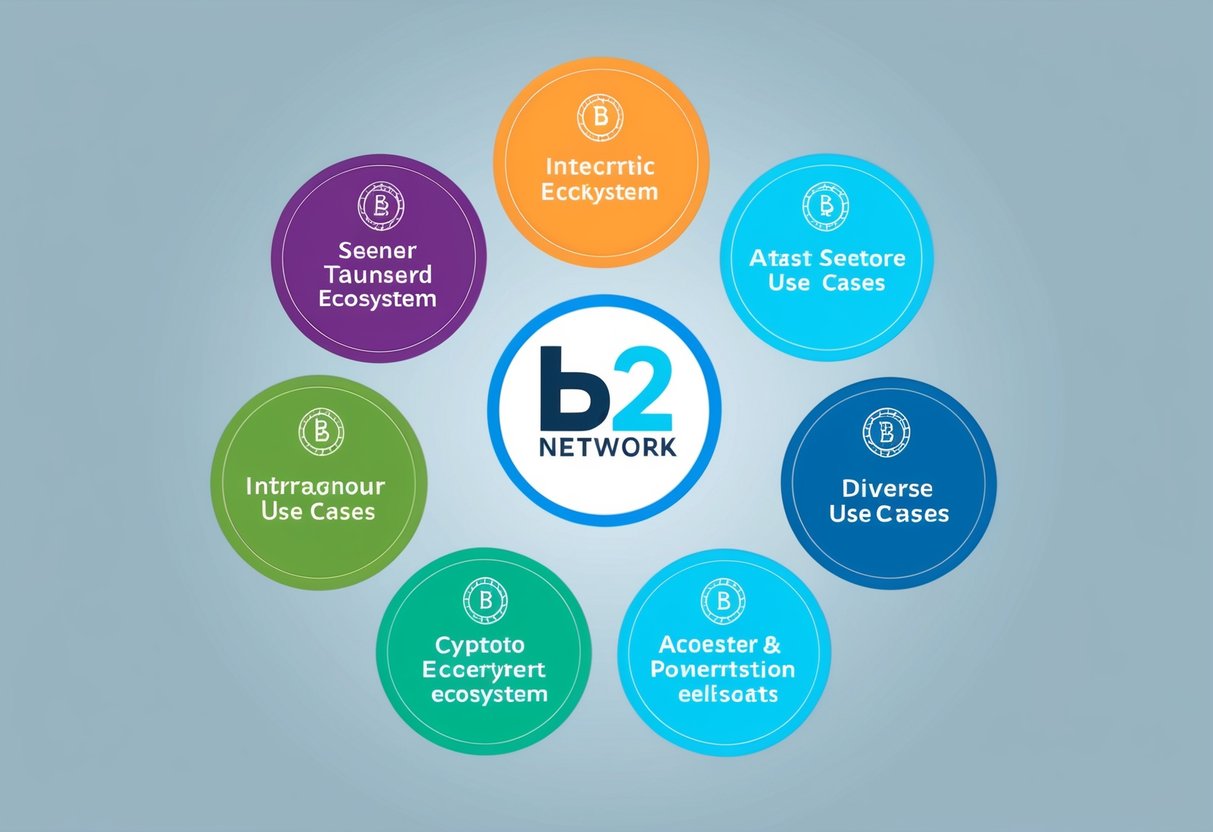
B2 Network coin is gaining attention as part of a new wave of projects aiming to make Bitcoin faster and more flexible. B2 Network coin is the native asset of B2 Network, a Bitcoin Layer-2 solution that uses zero-knowledge rollup technology to boost transaction speed and lower costs. This technology allows users to benefit from Bitcoin’s security while enjoying faster, less expensive transactions.

B2 Network stands out by being EVM-compatible, making it easier for developers to build apps and bring popular coins and NFTs onto the Bitcoin blockchain. More people are looking at B2 Network coin because it lets them access a growing ecosystem on a familiar and secure platform.
Today’s Airdrop Checker Even: Step-by-Step Claim:
🌐 Step 1: Visit the Official Airdrop Reward Page.
Dive into the action by heading to the official airdrop page, where all live events are waiting for you. Log into your account by connecting your wallet from any MOBILE DEVICE.
📱 Step 2: Use Your Mobile Wallet
Eligibility checks are mobile-exclusive! Grab your smartphone and ensure you’re using a mobile wallet to participate.
💎 Step 3: Meet The Eligibility Criteria
Make sure your wallet isn’t empty or brand new—only active wallets qualify. If one doesn’t work, don’t worry! Try again with another wallet to secure your rewards. You can claim many rewards from multiple wallets, so try to use multiple wallets to increase your chance to claim.
💰 Step 4: Withdraw The Tokens
After signing the approval from your wallet, wait 5 to 10 minutes, and then congratulations! You will see a token claim in your wallet. You can easily exchange your tokens from SushiSwap, PancakeSwap, and many more.
What Is B2 Network Coin?

B2 Network Coin is used within the B² Network, a Bitcoin Layer-2 project. It supports fast, low-cost transactions and plays a key role in security and application compatibility for users working with BTC and Ethereum Virtual Machine (EVM) systems.
Overview of B2 Network
B² Network is a Layer-2 scaling solution built on top of Bitcoin mainnet. It uses rollup technology and zero-knowledge proof methods to process transactions faster and at a lower cost than the regular Bitcoin network.
This network allows users to interact with both BTC and EVM-based applications, such as those on Ethereum and Binance Smart Chain (BSC). The system improves scalability, aiming to make Bitcoin more useful for decentralized apps and smart contracts.
B² Network claims to be over 50 times cheaper and 300 times faster than standard Bitcoin transactions. Security is maintained through Bitcoin’s proof-of-work and additional cryptographic verifications provided by zero-knowledge proofs.
Token Basics and Purpose
B2 Network Coin is the native token of the B² Network ecosystem. It is used mainly for transaction fees, staking, and participating in network governance.
The token aligns incentives and helps pay for computation and storage on the Layer-2 chain. Users spend B2 Network Coin to complete transfers, interact with decentralized applications, and potentially vote on upgrades or network proposals.
Because the network is EVM-compatible, B2 Coin can also work alongside other tokens, making transfers between Bitcoin and BSC or Ethereum-based assets simpler and more efficient. This versatility supports cross-chain activity and advanced crypto use cases.
Core Features and Technology

B2 Network coin uses new blockchain technology to make Bitcoin transactions faster and more flexible. It achieves this through added security measures, unique transaction processing, and support for advanced applications.
Security and Zero-Knowledge Proof
B2 Network implements security using zero-knowledge proof (ZKP) systems. This allows users to prove that a transaction is valid without revealing private details. With ZKP, private information remains hidden, which strengthens personal privacy and helps prevent fraud.
B2 Network is the first rollup on Bitcoin to commit to on-chain verification using these advanced cryptography methods. This level of security reduces the risk of attacks and makes each transaction more trustworthy.
Key security features also include robust encryption and regular checks to detect unusual activity. These steps ensure user funds and data remain safe in day-to-day use.
Rollup and Transaction Speed
B2 Network uses rollup technology to group and process many transactions at once. Instead of handling each transaction separately, hundreds or even thousands can be bundled together into a single batch. This reduces the amount of work the main Bitcoin blockchain must do.
The result is a much higher transaction speed and lower network fees for users. Faster processing allows people to send and receive coins in less time than the regular Bitcoin network could offer.
This method not only speeds up the network but also helps reduce congestion, making the service more reliable especially when the main chain is busy. By leveraging rollups, B2 Network brings higher throughput and better scaling to Bitcoin users.
Smart Contracts Integration
B2 Network is designed to be fully compatible with the Ethereum Virtual Machine (EVM). This means it can run smart contracts—programs that automatically execute rules or agreements—just like Ethereum does.
With EVM compatibility, developers can easily create decentralized applications (dApps) for Bitcoin. They can also move projects from Ethereum to B2 Network with minimal changes. This opens up the Bitcoin ecosystem for services such as DeFi, NFTs, and other blockchain applications not previously possible on the main Bitcoin chain.
The integration allows for a wider range of financial tools and apps built on a secure and scalable platform, combining Bitcoin’s popularity with Ethereum’s flexibility.
Ecosystem and Use Cases

B2 Network coin is designed to improve the Bitcoin ecosystem by enabling lower-cost and faster transactions. Its ecosystem supports both decentralized finance and digital asset uses, giving users many options for how to interact and benefit.
DeFi and Yield Opportunities
B2 Network coin supports several decentralized finance (DeFi) functions. Users can access services like liquid staking, which lets them earn rewards from their Bitcoin holdings without giving up ownership. Liquid staking derivatives (LSD) allow users to lock their coins and use the staked value in other DeFi protocols.
The platform offers lower transaction fees and quicker speeds than Bitcoin’s main network, according to recent data:
- Up to 50x cheaper transaction costs
- Processes transactions up to 300x faster
This means users can make and receive payments with lower delays and costs.
DeFi options may also include lending, borrowing, and yield farming, giving users ways to earn more from their assets.
Key Features Table:
| Feature | Benefit |
|---|---|
| Liquid Staking | Earn passive rewards |
| Fast Transactions | Cuts long wait times |
| Cheap Fees | Saves on every transaction |
NFT Applications
NFTs (non-fungible tokens) can be created and traded on the B2 Network. This network makes it easier for users to own and transfer digital items, such as art, collectibles, or digital proof of ownership. NFTs can move across the network quickly and with low fees, which is not common on traditional Bitcoin.
By using Zero-Knowledge Proof technology, NFT transactions stay secure and private.
Developers and artists have more flexibility and lower barriers to entry.
Users can also trade NFTs on open marketplaces, supporting a wider range of digital collections.
NFT Application Areas:
- Digital artwork
- Gaming assets
- Collectible tokens
These features help boost user activity and create new value in B2 Network’s digital economy.
Bridging and Interoperability
B2 Network coin uses advanced bridging solutions to connect with multiple blockchain systems. Its approach helps users move assets such as ETH, MATIC, and ORDI more easily and securely between different networks.
Bridge Mechanisms
B2 Network features several bridges that allow users to transfer coins like Bitcoin and Ethereum from other networks onto the B2 chain. For example, it uses TeleportDAO and Grail Bridge to provide trustless and secure movement of BTC to EVM-compatible blockchains.
These bridges work by locking coins on the original blockchain and then issuing a matching amount on B2 Network. This lets users interact with decentralized apps on B2 without leaving their assets behind.
Thanks to partnerships with platforms like Celer’s cBridge, users can also bridge tokens such as MATIC. The Binance bridge lets users send assets directly from Binance to the B2 Network, adding flexibility for both new and experienced users.
B2 Network’s focus on security means users keep control of their funds during the bridging process. This minimizes risk and helps protect against common bridge attacks found on other platforms.
Cross-Chain Cooperation
B2 Network is designed for strong cooperation across major blockchains. It supports asset transfers between Bitcoin, Ethereum, and other networks using various reliable bridges. This improves liquidity and makes blockchain apps easier to use.
By connecting with EVM-compatible chains and Bitcoin Layer 2s, B2 Network increases transaction speed and reduces costs. The network’s cross-chain design allows for trading, swapping, and transferring assets like ETH, MATIC, and ORDI efficiently.
Projects using B2 Network can build apps that reach users on many different chains. This interoperability lets developers and users benefit from the strengths of each blockchain without complicated processes.
B2 Network works with partners to improve communication and transfer features. As a result, the ecosystem offers smoother and safer experiences for moving assets across networks.
Transaction Fees and Economic Model
B2 Network coin uses an improved fee and economic system to give users lower fees and faster transactions. It also has measures to stop spam and support secure, consistent network operation.
Fee Structure
B2 Network coin applies a straightforward fee structure. Each transaction on the network requires a small transaction fee, which users pay to get their transfers processed. These fees are used to reward network validators and support system security.
Unlike Bitcoin, where fees often rise with network congestion, B2 Network’s design allows fees to stay low even during busy times. Fee amounts are predictable, so users know exactly how much they will pay before sending a transaction.
A simple table shows the difference:
| Network | Average Fee (USD) | Fee Volatility |
|---|---|---|
| Bitcoin | High | High |
| B2 Network | Low | Low |
This stability encourages more people and businesses to use B2 Network coin.
Spam and Response Management
To protect against spam attacks, B2 Network uses its fee system and automated checks. Every transaction requires a minimum fee. This stops people from sending thousands of tiny transactions just to clog the network.
Automatic response measures can detect suspicious activity. The network slows down or blocks traffic that looks like spam, keeping service reliable for regular users. Validators are also alerted to check for spam patterns and act quickly when needed.
This balance between a low cost and anti-spam measures helps keep the network secure and fair.
Cost Efficiency: Cheaper and Faster
B2 Network coin is known for much lower costs and faster transaction speeds compared to Bitcoin. Reports show that fees are about 50 times cheaper and transactions are processed 300 times faster.
Low fees mean users save money on every transfer, which is especially important for small payments. The fast confirmation times let users complete transactions almost instantly, which is a big improvement over networks that require long waits.
These gains make B2 Network coin useful for both everyday purchases and business transfers. Lower fees and quick responses support broader adoption and more transaction types.
Future Prospects and Integrations
B2 Network is positioned to transform how Bitcoin supports smart contracts and decentralized finance. Upcoming partnerships, growth strategies, and media attention are shaping its place in the blockchain ecosystem.
Upcoming Partnerships
B2 Network is working to build a strong set of partnerships to expand its reach and functionality. It is integrating Chainlink’s Cross-Chain Interoperability Protocol (CCIP), which allows secure data exchange across blockchains. This integration helps B2 Network become more flexible with smart contract applications.
There are also plans to work with existing platforms that focus on DeFi and NFTs. By joining forces with these projects, B2 Network aims to provide more choices for developers and users. The network’s goal is to attract teams building new apps and services on Bitcoin.
Several ventures, such as Symbiosis, are already collaborating with B2 Network. These partnerships are important for offering features like cross-chain swaps, which could attract users interested in trading or using assets from different networks.
Expansion Plans
B2 Network is looking to grow beyond its current role as a Bitcoin Layer-2 solution. Its roadmap involves support for the Ethereum Virtual Machine (EVM), which will let developers build decentralized apps (dApps) and DeFi tools using widely-known coding standards. EVM compatibility opens the door for more projects to transition onto the B2 platform.
The team is preparing for an Initial Coin Offering (ICO) set for Q4 2024. This event will likely bring more collaborators and capital to the project. Zero-knowledge proof technology is also part of the expansion. This will add privacy and efficiency to transactions while still keeping security high.
B2 Network is also broadening its reach by including tools for NFT minting and trading, making the network more attractive to artists, game creators, and collectors. These new features may help the network stand out among other Layer-2 solutions focused only on fast transactions.
Press Coverage
B2 Network has received coverage from media sites and blockchain industry blogs. Analysts highlight that it brings advanced smart contract abilities to the Bitcoin network, which is a significant development for DeFi and NFTs. News of partnerships and technology launches has been featured in both general blockchain media and platforms like Yahoo.
The project’s ICO plans and new integrations have been discussed by respected industry writers. This coverage shows that there is interest in potential use cases and future growth of the network. However, some key public directories and contact details, such as an official telephone number, are not widely shared yet.
There is growing discussion among blockchain experts and investment groups, including those focused on DeFi, about B2 Network’s impact on the larger ecosystem. While coverage is positive, detailed reviews by larger outlets such as DISA have not yet appeared.
Frequently Asked Questions
B2 Network is a Layer-2 solution built on top of Bitcoin, aiming to deliver faster speeds and lower costs. It uses Bitcoin-level security and offers unique tools for users, miners, and developers.
How can one participate in the B2 Network airdrop?
B2 Network may offer an airdrop for its token. To become eligible, users often need to use the platform or complete specific tasks set by the project team. These might include interacting with its features or holding certain assets.
Updates on eligibility are usually released on B2 Network’s official website and social media channels.
What are the latest updates on the B2 Network mining process?
The B2 Network uses Proof of Work (POW) for its Level-1 security layer, similar to Bitcoin. There may be special requirements or updates for miners using the B2 Network, so staying updated through official channels is recommended.
Details on rewards and mining setup can change as the platform grows.
How does the B2 Network bridge operate, and what are its benefits?
The B2 Network bridge helps move assets between Bitcoin and B2 Network. It gives users access to faster transactions and lower fees compared to Bitcoin’s main network.
The bridge uses cryptographic methods, including zero-knowledge proofs, to keep transfers secure.
Where can I find detailed information about the B2 Network token price?
Users can check the price of the B2 Network token on popular cryptocurrency exchanges and tracking websites. These usually display price trends, trading volumes, and historical data.
Official announcements from B2 Network may also share updates about listings or price movements.
What features does the B2 Network explorer offer?
The B2 Network explorer lets users look up transaction details, wallet addresses, and block confirmations on the network. It makes it easier to track transactions and network activity.
Developers and users rely on the explorer for network transparency and troubleshooting.
Could you explain the purpose of the B2 Network testnet?
The B2 Network testnet is used for testing new features and updates without risking real tokens. Developers and users can try out changes in a safe environment, helping to improve security and stability.
It’s open for experimentation before changes move to the main network.
Leave a Reply